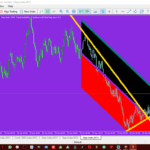You’ve probably heard of the primary market and secondary market, whether you’re a novice or a seasoned trader. Both are capital markets in their own right.
To comprehend how stocks, bonds, and other assets move, you must have a thorough understanding of both the primary and secondary markets.
Trading the financial markets would be far more difficult and less rewarding if you didn’t have a good grasp.
So, if you’re interested in learning more about the primary and secondary markets, read this tutorial to the conclusion to receive all the details. Here’s how to make money in the stock market on a daily basis, according to our recommendations.
What Is The Definition Of A Primary Market?
The primary market is a venue for the creation of securities. In an initial public offering, or IPO, companies propose to sell new stocks and bonds to the public for the first time in this market.
Meanwhile, through these deals, investors might acquire securities from the bank that handled the first underwriting for a particular stock.
An initial public offering (IPO) is when a private company issues shares to the general public for the first time.
- A primary market’s main characteristics are that it meets the company’s capital requirements.
- Liquidity is abundant.
- Manipulation of Low Prices
- There are no market fluctuations.
- There is no need to pay for a broker or a transaction fee.
- There are five main types of primary market issuances:
- There are five different types of primary market issuances. So let’s take a closer look at them!
Initial Public Offering (IPO): An initial public offering (IPO) is one of the most well-known ways to raise funds in the primary markets (IPO).
Meanwhile, an initial public offering (IPO) is the process through which a private company goes public by selling its stock to the general public (IPO).
An initial public offering, on the other hand, permits a corporation to raise equity money by selling new shares to the broader public.
Preferential Issue: When a corporation provides shares to a specific group of people at a price that may or may not be linked to the market price, this is known as a preferential allotment.
In a preferential allotment, preference owners receive dividends before normal stockholders. Meanwhile, the firm decides on the allocation technique, which is neither pro-rata or any other approach.
A rights issue occurs when a company raises additional cash from existing shareholders by issuing additional shares at a lower price than the current market price.
Meanwhile, for a short period, investors can purchase these shares at a discounted price.
A bonus issue is when a company gives current shareholders free, fully paid additional shares. Furthermore, these shares provide an incentive to the company’s existing shareholders. Bonus shares, on the other hand, do not necessitate the issuance of additional capital.
A Qualified Institutional Placement (QIP) is a way of raising capital in which a company offers equity shares, fully and partially convertible debentures, or any other securities.
Furthermore, only Qualified Institutional Buyers are permitted to purchase QIPs.
What Is A Secondary Market, And How Does It Work?
The secondary market, often known as the “After issue market,” is a market where firms’ stocks can be bought.
Some of the largest stock exchanges, such as the New York Stock Exchange (NYSE), Nasdaq, National Stock Exchange (NSE), and all other major stock exchanges throughout the world, are part of the market.
Traders exchange previously issued securities in the secondary market without the involvement of the issuing corporation.
If you want to buy Tesla shares, for example, you’ll only be interacting with another Tesla shareholder. In the meantime, Tesla will not be actively involved.
- The Characteristics Of A Secondary Market:
- Provides a High Level of Liquidity
- Following Is Strictly Regulated New Investments are Encouraged in the Primary Market
- Economic Growth Contribution
- Secondary Markets are divided into the following categories:
- Stock exchanges, over-the-counter markets, auction markets, and dealer markets are the four basic forms of secondary markets.
Stock exchanges are organized markets where buyers and sellers of securities can trade securities. Meanwhile, the Bombay Stock Exchange (BSE), the National Stock Exchange (NSE), and the New York Stock Exchange are examples of such platforms (NYSE).
In addition, the exchange is responsible for acting as a go-between for buyers and sellers. Counterparty risk is almost non-existent due to the exchange’s high regulatory compliance.
Over-the-Counter (OTC) Market: The over-the-counter (OTC) market is an informal marketplace for exchanging securities. Furthermore, the OTC market is a decentralized market where traders trade with one another.
The OTC market, on the other hand, consists of securities that do not meet the requirements for a stock exchange listing. Furthermore, it is a two-way agreement between investors and dealers.
Meanwhile, smaller businesses that do not meet formal exchange standards trade their stocks on the OTC market.
The danger in this industry is relatively considerable in the absence of regulatory supervision. Furthermore, because of the severe competition for higher volume, the price of securities may differ from one seller to the next.
The auction market is a marketplace where buyers and sellers can bargain over the price at which securities are sold.
Meanwhile, the public has access to pricing information, including the offer’s bidding price.
Dealer Market: The dealer market is a type of secondary market in which several dealers set prices for certain assets for trading. In the meanwhile, this market type is mostly used to trade bonds and foreign currencies.
Differences Between the Primary and Secondary Markets:
Here are some major differences between the primary and secondary markets to help you better comprehend both capital markets:
| Key Differences | Primary Market | Secondary Market |
| Meaning | It is a marketplace where securities are created. | It is a marketplace where traders trade previously issued securities. |
| Purchase Type | Direct | Indirect |
| Market Participants | Companies, Investment Banks, Investors, and Underwriters | Investors, Stockbrokers, and Traders |
| Intermediaries | Investment Bankers and Underwriting Firms | Brokerage Platforms |
| Price levels | Fixed | Change with Supply and Demand |
| Purpose | Fulfills the capital requirement of a company | Allow Traders and stockbrokers to earn profits |
| Validity | Securities can be traded for once | They can be traded for multiple times |
| Other Names | New Issue Market (NIM) | After Issue market (AIM) |
That concludes this comparison of primary and secondary markets. In the meantime, let’s move on to the following portion.
The Difference Between Primary and Secondary Markets:
Primary markets are new markets, whereas secondary markets are resale markets. Meanwhile, knowing how these financial markets operate allows investors to increase their earning potential.
The primary and secondary financial markets both play a critical role in mobilizing cash for enterprises that contribute to economic growth.
Meanwhile, the stock market has a variety of repercussions on an economy’s particular businesses. This is because the economy and stock market of a country move in lockstep.
When the stock market is performing well, it usually means the economy is growing. This is because when the economy grows, individual businesses create more and expand.
In a market economy, both the primary and secondary markets play an important role. Meanwhile, a well-functioning capital market is necessary for effectively moving resources in today’s economy.
Who is involved in the Primary and Secondary Markets?
Investors in the primary and secondary markets differ because they have different expectations and financial goals.
Secondary market investors, on the other hand, can only trade securities after primary market holders have sold them.
In the primary market, on the other hand, investors invest in companies by filing for an initial public offering (IPO), either for long-term benefits or for listing gains.
Traders and short/long term investors, on the other hand, are secondary market investors.
The Bottom Line: Hopefully, after reading this extensive and in-depth article about the primary and secondary markets, you have a better understanding of the subject.
We’ve also listed the distinctions between the primary and secondary markets above. Both of these capital markets, on the other hand, carry a high level of risk.
So, if you’re thinking about getting into secondary market stock trading, there’s no better place to start than InvestBy.
What Is an Example of a Secondary Market? FAQs: What Is an Example of a Secondary Market?
Secondary markets include the National Stock Exchange (NSE), the New York Stock Exchange (NYSE), the Nasdaq, and the London Stock Exchange (LSE).
What Is The Main Distinction Between The Primary And Secondary Markets?
Securities are created in the primary market. These securities are exchanged in the secondary market in the meanwhile.
What Is The Difference Between The Four Types Of Secondary Markets?
Stock exchanges, OTC markets, Dealer markets, and Auction markets are the four main forms of secondary markets.
What Kinds Of Primary Markets Exist?
The primary stock market, primary bond market, and primary mortgage market are the three main forms of primary markets.
What Is The Secondary Market’s Most Important Characteristic?
The primary market’s best advantage is that it has a lot of liquidity.







